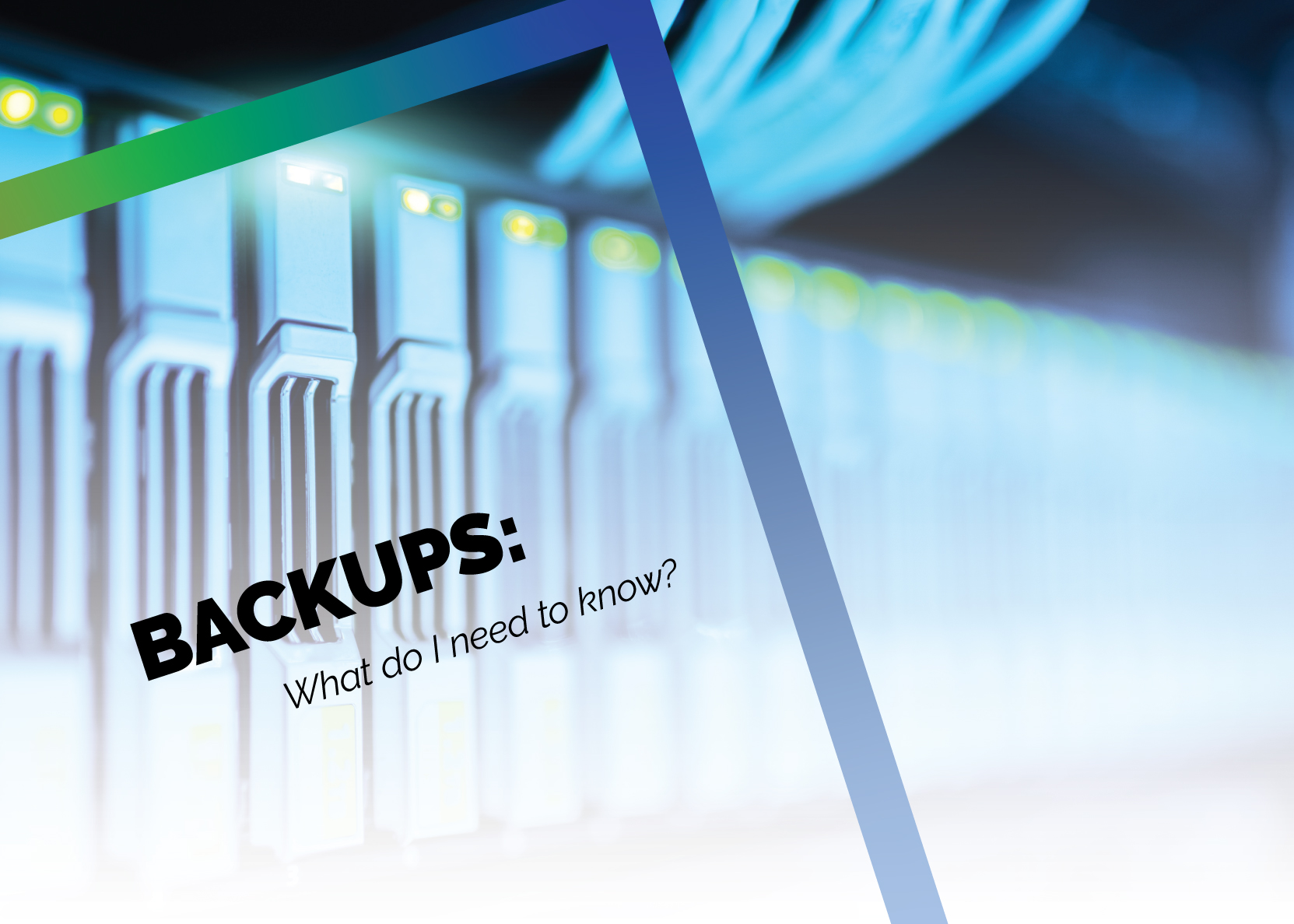3 min read
Building Culture That Works: Cobb Tech Named One of VA's Best
Cobb Technologies has been honored as one of the 2025 Best Places to Work in Virginia by Virginia Business and Best Companies Group. This prestigious...

We live in a universe dictated by Murphy’s law; anything that can happen, will happen. No matter how secure your business’ network is, eventually, disaster will strike. And when it does, there is only one thing keeping your business safe from facing days or potential weeks of downtime: backups.
Disaster does not always come in the form of a security breach either — hardware failure, natural disaster, power failure — given enough time, something will happen to your business’ network.
So, what do you need to know about backups to make sure your system is properly protected through redundancy?
KNOW YOUR RTO AND RPO
Recovery Time Objective (RTO) and Recovery Point Objective (RPO) are the metrics used to designate when backups happen, and how fast your organization’s network can be restored after a disaster.
Essentially, if your network’s RTO is one day, and your RPO is one week, after suffering a disaster, your business would be up and running in twenty four hours, operating from files that are a week old. The smaller period of time your network’s RPO is, the more recent of a “snapshot” of your server will be available to you after accessing your backups.
Faster recovery times, and shorter recovery periods for backup systems can lead to expensive solutions — determining the best RTO and RPO for your business depends on where you want to land on the spectrum of being protected, yet not overspending.
FILE LEVEL BACKUPS, AND SNAPSHOTS
There are two types of methods for backing up your business’ server: file level backups, and full image backups.
File level backups do just what their name implies — create backups of all of the files on your server. Full image backups take a “snapshot” of your server at the time the backup is conducted, replicating the state of the entire network; files, software, configuration of hardware, and the server’s operating system.
File level backups are undoubtably less expensive to maintain than full image backups, but there is little-to-no benefit other than cost savings. Take, for example, a business that needs both a fast RTO, and a small RPO — even if the recovery point is a single day, the recovery time will be adversely affected.
If the disaster is due to hardware failure, not only will your business will be forced to wait while repairs are completed, you will also have to deal with reinstalling the operating system, reinstalling all applications, and then finally dumping your file data back into the server. For a complex environment, this can lead to extra days, if not weeks of unneeded downtime.
Due to this, any business that requires a fast RTO needs to consider the benefits of a full image backup server. While you will sill face the downtime of repairing hardware failure, as soon as that initial step is complete, your network will be up and running.
Another major benefit of a snapshot server is the ability to actually run your business’ entire environment from the backup server. While your main server is down, you can run all applications and functions on the backup server itself, and migrate back over once repairs are finished. While this can become an expensive option, for a business that absolutely cannot afford any loss of efficiency, it is necessary.
QUESTIONS TO ASK YOUR MITS PROVIDER
The most important question you can ask your MITS provider about your system’s backups is, “Is my backup system working?”
It is important to continuously monitor your backup system, and to conduct regular tests of your backup server. These tests should include pulling random files from the backup system to see if they work properly, spinning up the server in the cloud if your solution is cloud-based, and testing for any errors.
If your test comes back with errors, it is important to analyze those errors — and just as crucial to study are the successes in your test. Reports need to be inspected closely, because sometimes a backup test may come back as a failure — but that could be due to missing 1% of the files on your server. Conversely, a success might mean your backup was 99% successful.
WHAT ABOUT ONEDRIVE, SHAREPOINT, AND CLOUD-BASED FILE STORAGE?
While services like OneDrive, Google Drive, Dropbox, and other cloud-based storage solutions do provide your business with a layer of redundancy, they are not true backups. This is due to one simple reason; if a single device on your network is infected with a virus, and that virus bleeds into your cloud-storage solution, it can compromise all the entirety of the system in which the file is stored.
If you want to make sure your backup system is working, reach out to your MITS provider, and ask for them to conduct a test. And for any business that has not tested their backups in over three months, this should be made a high priority task — an improperly-working backup system can mean losing months or years worth of data and work.

3 min read
Cobb Technologies has been honored as one of the 2025 Best Places to Work in Virginia by Virginia Business and Best Companies Group. This prestigious...

5 min read
Cobb Technologies is honored to hold the SWaM (Small, Women-owned, and Minority-owned Business) certification, awarded by the Commonwealth of...

5 min read
Every year, thousands of Veterans transition from military service to civilian careers in Virginia, bringing invaluable skills and experiences to...